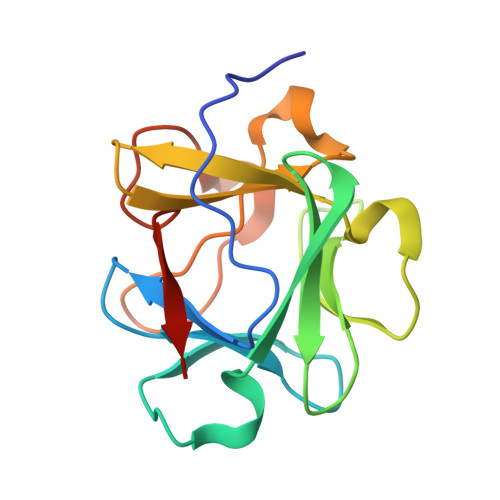Mutation choice to eliminate buried free cysteines in protein therapeutics.
Xia, X., Longo, L.M., Blaber, M.(2015) J Pharm Sci 104: 566-576
- PubMed: 25312595
- DOI: https://doi.org/10.1002/jps.24188
- Primary Citation of Related Structures:
4Q91, 4Q9G, 4Q9P, 4QAL, 4QBC, 4QBV, 4QC4 - PubMed Abstract:
Buried free-cysteine (Cys) residues can contribute to an irreversible unfolding pathway that promotes protein aggregation, increases immunogenic potential, and significantly reduces protein functional half-life. Consequently, mutation of buried free-Cys residues can result in significant improvement in the storage, reconstitution, and pharmacokinetic properties of protein-based therapeutics. Mutational design to eliminate buried free-Cys residues typically follows one of two common heuristics: either substitution by Ser (polar and isosteric), or substitution by Ala or Val (hydrophobic); however, a detailed structural and thermodynamic understanding of Cys mutations is lacking. We report a comprehensive structure and stability study of Ala, Ser, Thr, and Val mutations at each of the three buried free-Cys positions (Cys16, Cys83, and Cys117) in fibroblast growth factor-1. Mutation was almost universally destabilizing, indicating a general optimization for the wild-type Cys, including van der Waals and H-bond interactions. Structural response to Cys mutation characteristically involved changes to maintain, or effectively substitute, local H-bond interactions-by either structural collapse to accommodate the smaller oxygen radius of Ser/Thr, or conversely, expansion to enable inclusion of novel H-bonding solvent. Despite the diverse structural effects, the least destabilizing average substitution at each position was Ala, and not isosteric Ser.
Organizational Affiliation:
Department of Biomedical Sciences, Florida State University, Tallahassee, Florida, 32306-4300.





















